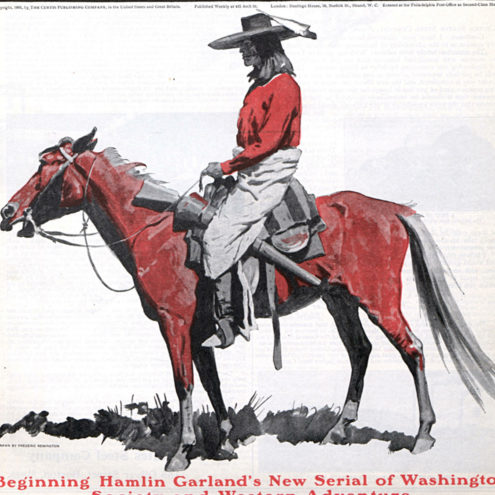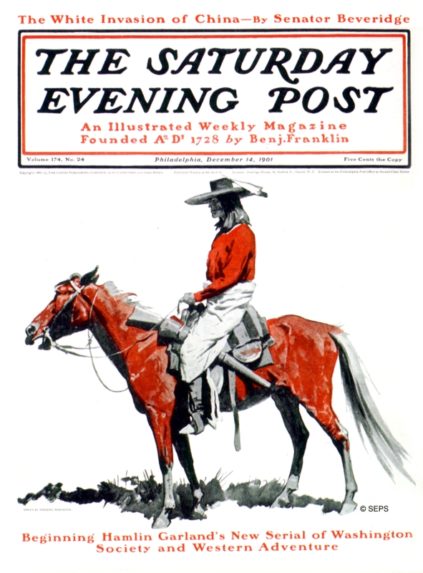Frederic Remington (1861-1909) was born in Canton, New York. His family moved to Ogdensburg, New York, when he was 11 and where he attended various military schools. It became obvious that Remington was not solider material. He spent most of his time drawing silhouettes and caricatures of his classmates. He went on to attend the art school at Yale University, where he was the only male student his freshman year. However, Remington wasn’t very interested in formal art training. He preferred action drawing. His first illustration that was published was a cartoon of a bandaged football player for the Yale student newspaper.
After Remington’s father died, he refused to go back to art school, and used his inheritance to travel. In 1886 he was sent to Arizona by Harper’s Weekly as an artist-correspondent to cover the war against Geronimo. He never caught up to Geronimo, but he collected authentic artifacts he would later use as props. He started working for Outing magazine to expand his commission work. He was also commissioned to illustrate for a book by Theodore Roosevelt called Ranch Life and the hunting Trial.
Remington’s fame and authentic western art made him a favorite to western Army officers. He was invited out west to make portraits of them. Remington completed several paintings depicting the final battles against the last of the Native Americans. He eventually became a war correspondent for the New York Journal during the Spanish-American War during 1898.
He wrote two novels, The Way of an Indian and John Ermine of the Yellowstone. After he wrote John Ermine he decided to quit writing and illustrating to focus on creating sculptures and paintings. In 1905 the president of the Fairmount Park Art Association commissioned Remington to create a large cowboy sculpture for Philadelphia’s Fairmount Park. This sculpture is one of the earliest examples of site-specific art in the United Sates.
An illustration by Remington appeared on the December 14, 1901, cover of The Saturday Evening Post.

